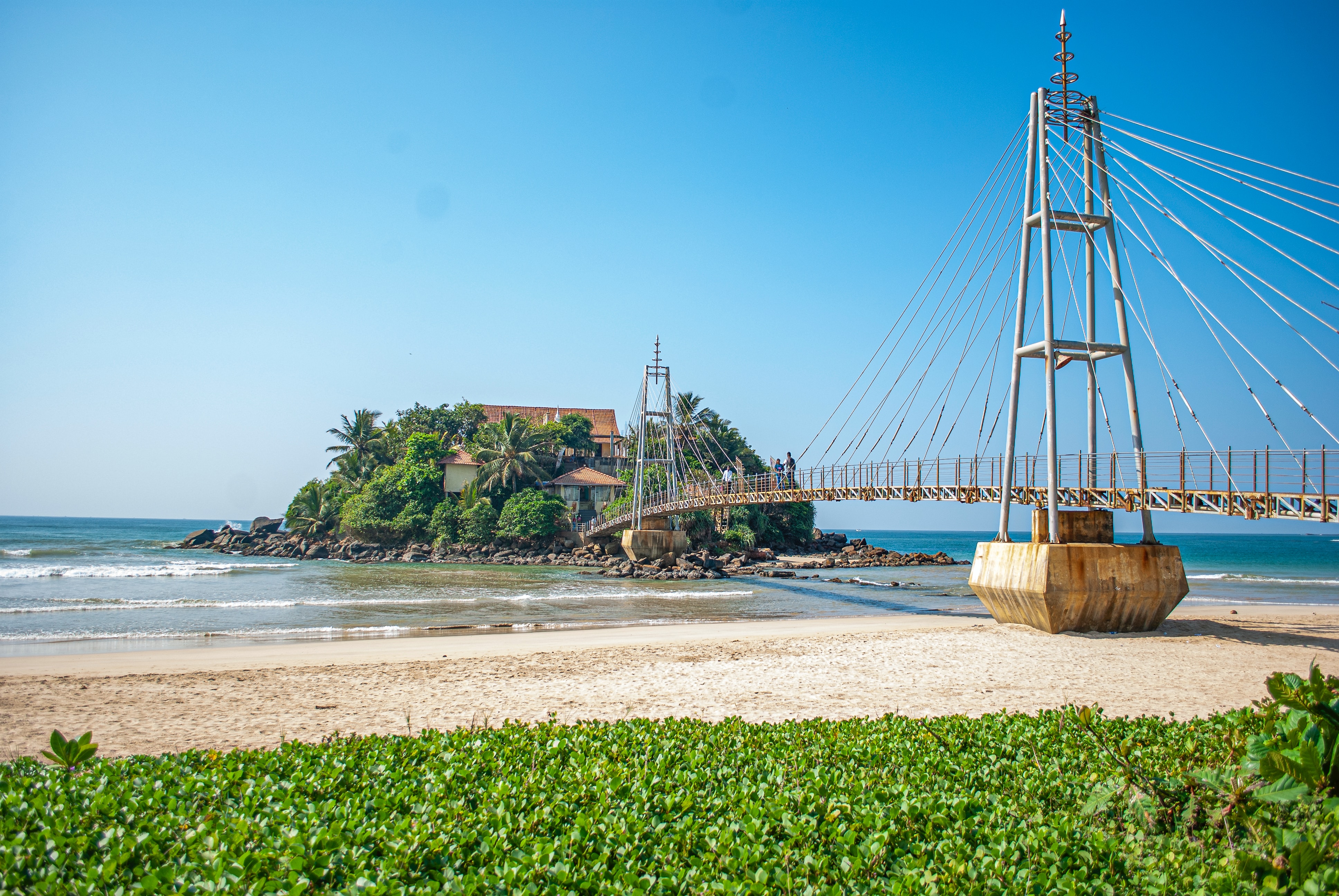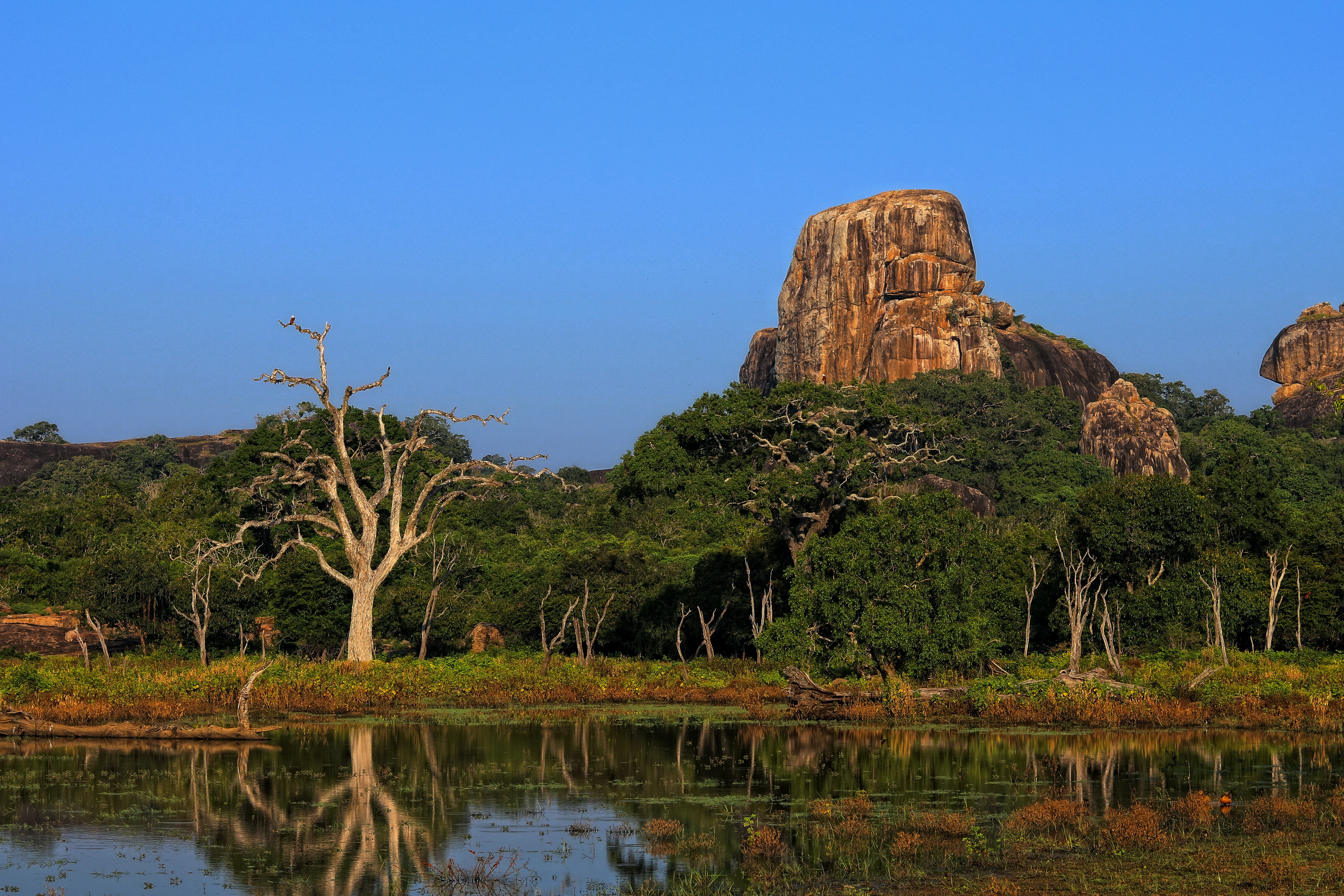Districts & Top Destinations

Galle — Capital of the Southern Province
UNESCO-listed Galle Fort blends Dutch ramparts, boutique cafés, and sunset walks above the sea. Base yourself here for day trips to Unawatuna, Jungle Beach, and Thalpe or a whale-watching morning in Mirissa (45–60 min away). Best time to visit: Dec–Mar for dry weather and calm seas; Apr is a good-value shoulder month.

Matara — Sri Lanka’s Southern Tip & Reef Beaches
Laid-back beaches and local life. Madiha and Polhena offer reef-protected swimming and snorkeling; stroll to Paravi Duwa Temple via the footbridge and visit Dondra Head Lighthouse, the island’s southern tip. Surf spots suit beginners to intermediates, with family-friendly stays nearby. Best time to visit: Dec–Mar.

Hambantota — Wild South: Parks & Coastal Retreats
Gateway to Yala and Bundala—think leopards, elephants, and world-class birding—plus quiet beaches from Tangalle to Rekawa (turtle nesting). Nature-luxe lodges and new highways make it easy to split days between sunrise safaris and calm coves. Best time to visit: Feb–Jul for drier parks; Dec–Mar offers the calmest seas.

GALLE | MATARA | HAMBANTHOTA
Southern Province
The most famous coastal area
Southern Province is the go to area if you want to revel in a beach. Apart from that this province if of high cultural value. It is the 7th largest province by area out of 9. The land area is about 5,544 km². Although it is fairly small, the province is rich in its own culture.
Location & Geography
The province is uniquely located, bordered by other provinces and the sea. From the North, there is Sabaragamuwa and Uva provinces. From the Northeast there is Eastern province. Then from the Northwest there is Western province. Finally from the south, west and east there is the Indian ocean.
Climate & Best Time to Visit
Southern Province is warm year-round (about 27–31°C) with high humidity. Two monsoons shape travel: the south-west monsoon (May–Sep) brings frequent showers and rougher seas to Galle–Matara, with heaviest rain in May–June, while Oct–Nov is an island-wide “inter-monsoon” that can deliver short, thundery bursts. For sunny beach days and calm water, the best months are Dec–Mar—also prime for Mirissa whale watching. Apr and Nov are good-value shoulder months with a mix of sun and brief storms. Safari conditions in Yala (Hambantota side) are typically driest Feb–Jul, when wildlife sightings are strong; occasional short closures can occur late dry season. Plan outdoor activities for early morning or late afternoon for cooler, clearer light.
People & Culture
It is the home to about 2.5 million people. Hence, this makes it the 3rd most populated province.
According to a housing census in 2012, it is a Sinhalese majority population – which is about 95%. Secondly, the Moor population which is 2.9%. Thirdly, 1.7% of Tamils live there.

The capital of Southern Province
The top of mind recall with Galle is certainly the beaches. Also it is the largest city of the Southern Province.
The name ‘Galle’
In the past people referred to Galle as Gimhathitha. This means ‘a port near the Gin river’. Later it became Galle. This was mainly due to the bullock carts which were parked in the area. These carts had long journeys from other parts of the country.
The history of Galle
Even before foreign invaders arrived, Galle was a main harbor. Because the location was easily reachable. Iban Batuta as well as a Moroccan Berber Muslim traveler arrived the country via Galle. It was in the 14th century when the city was the main port. They referred to Galle as Quali. Also there were businessmen all over the world who accessed the port. These merchants were mostly from China, Arab. Rome, Persia and India. Later in 1502 some Portuguese ships got stranded in the sea. Their arrival to Galle is a total coincidence. Later they took charge of the area.
However in 1604, the Dutch took over the control. It was them who built the Galle fort we see today. Galle achieved notable growth during that era.
Attractions of Galle
Travelers come looking for Galle for its historic and cultural value. There are many such places and some of them are listed below.
The Galle Fort
It was the Portuguese who built the fort first in 1588. However it was the Dutch who improved it. It is more than 430 years old. But still maintains its polished facade.
The Portuguese construction was rather basic. They did not build anything towards the sea side. They thought there was no risk from that side. But the Dutch thought otherwise. They renewed the fort with coral and granite stones. Specifically, the area of the fort was around 52 hectares (130 acres).
Later in 1796 the British gained control. At that time Fort was used as their base point in the Southern area. They also added new features to it including the historic lighthouse.
Today it’s a main tourist attraction point. One can see all kinds of shops like gems, clothing, handlooms and many more.
Unawatuna beach
It is not an overstatement to say that Unwatuna is the most famous beach in Sri Lanka. Despite the beach, there is a vast biodiversity there.
It takes about 15 minutes to reach the beach from Galle city. Hence, it is easily accessible.
There are many activities around the beach too. One can see surf points and safe swimming areas.


